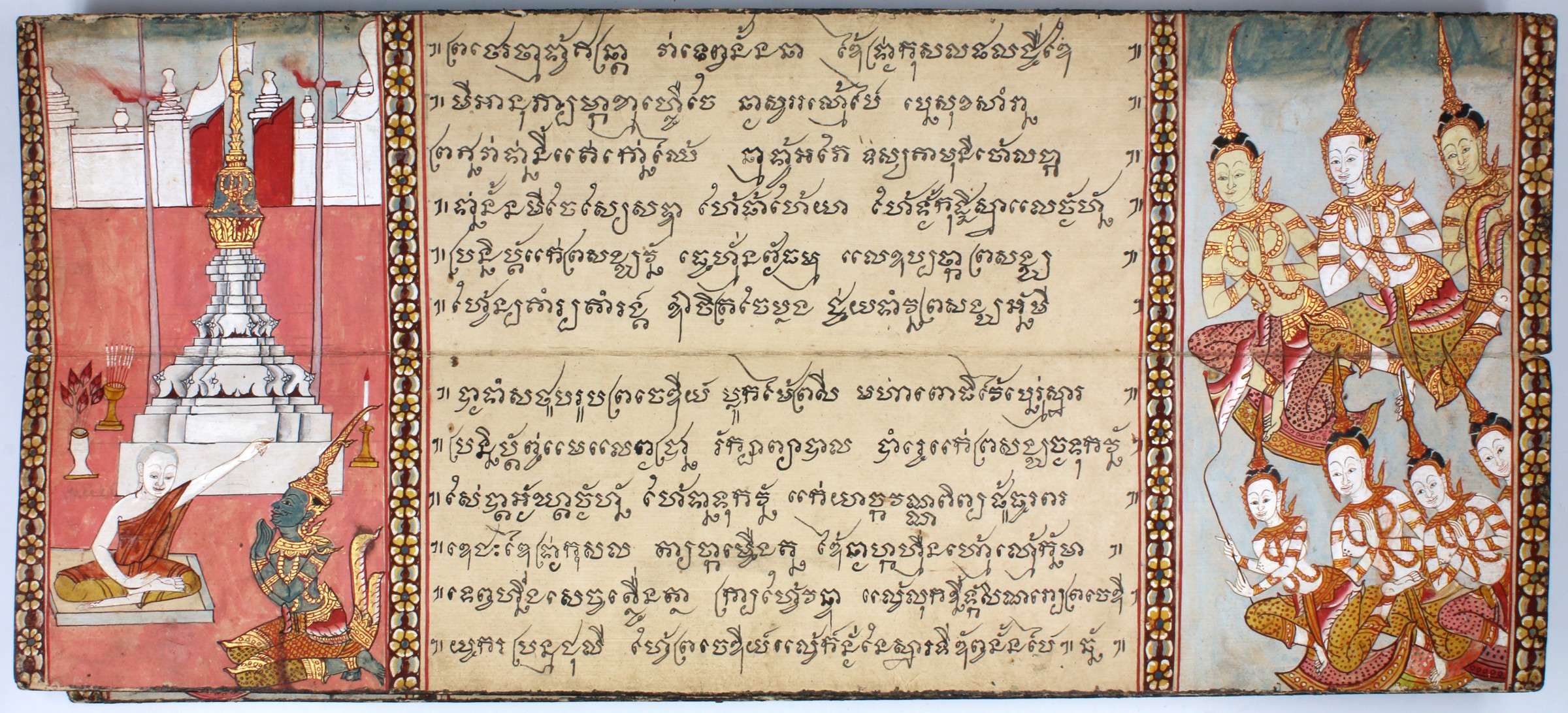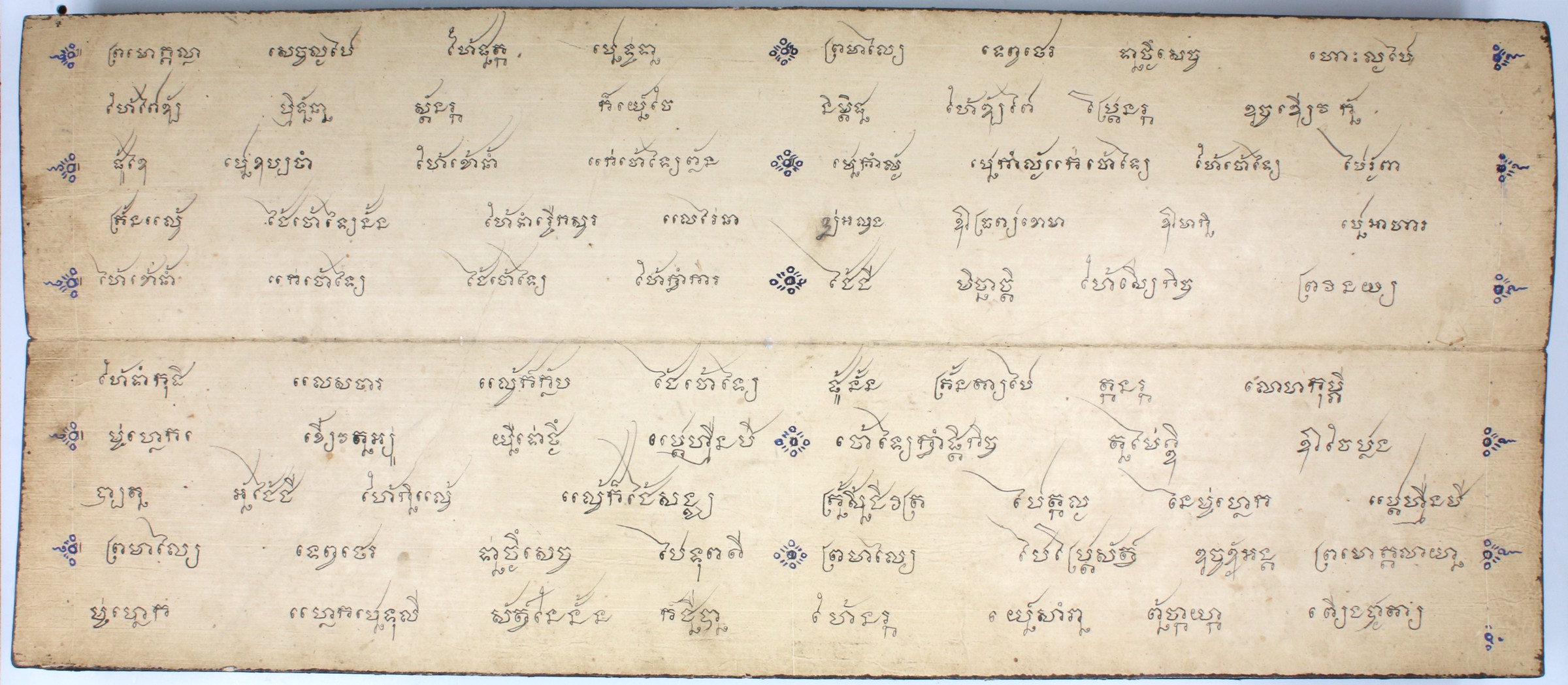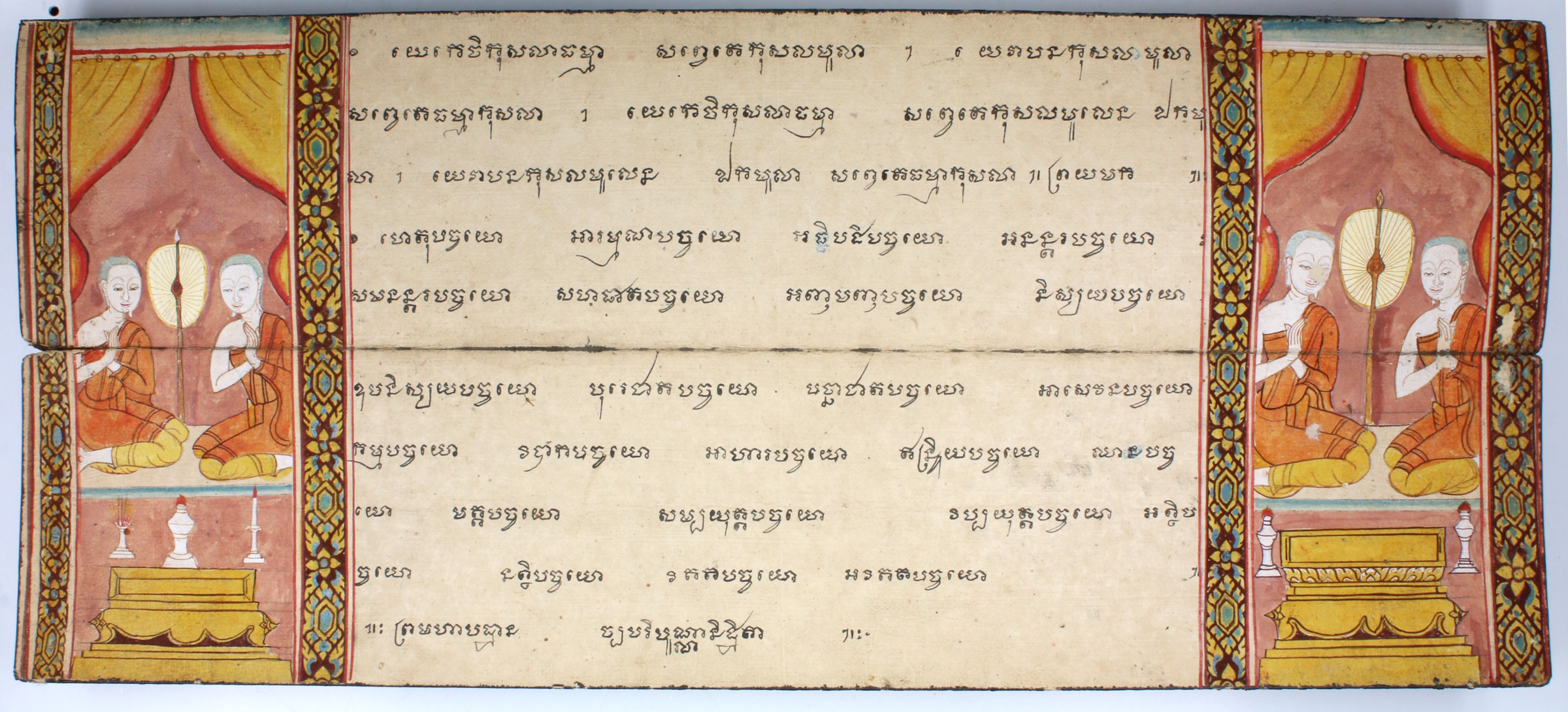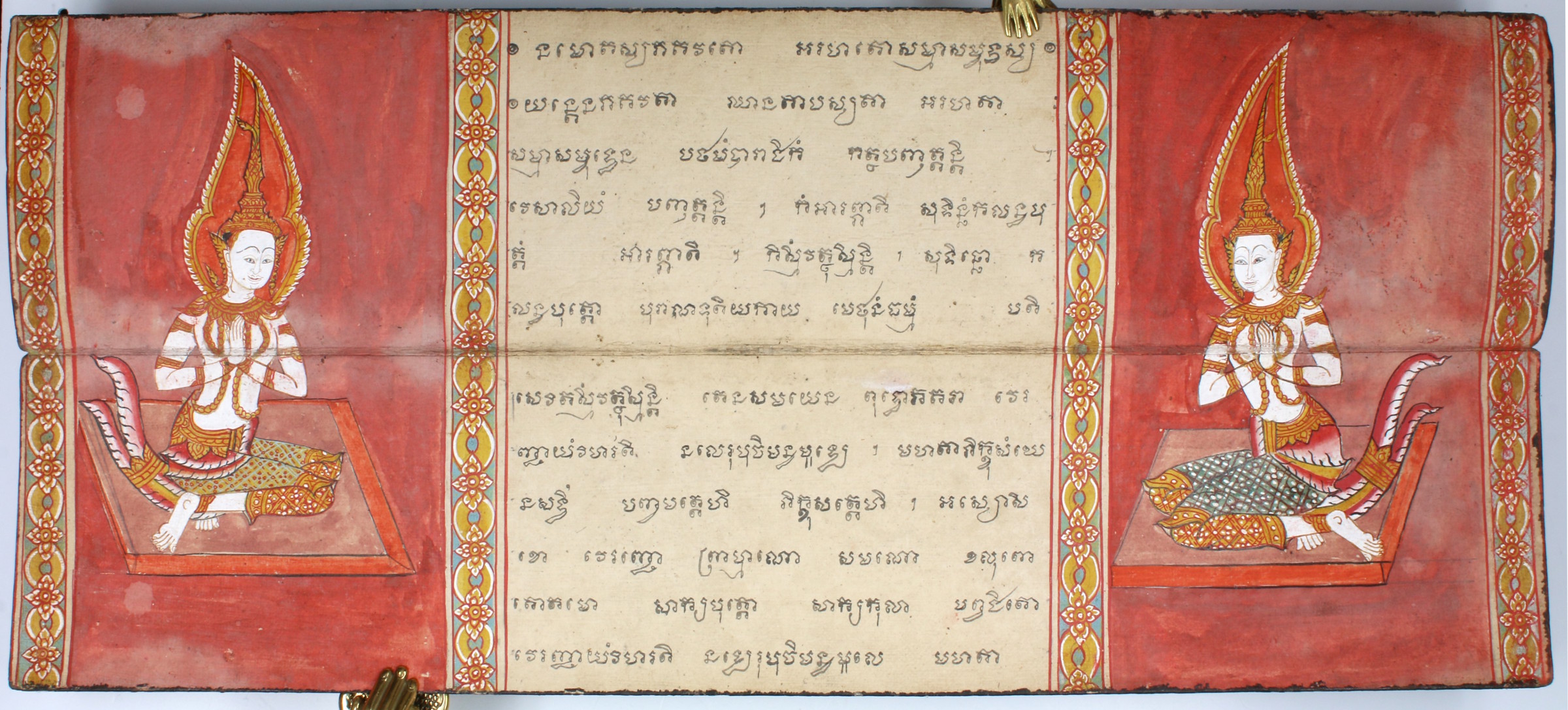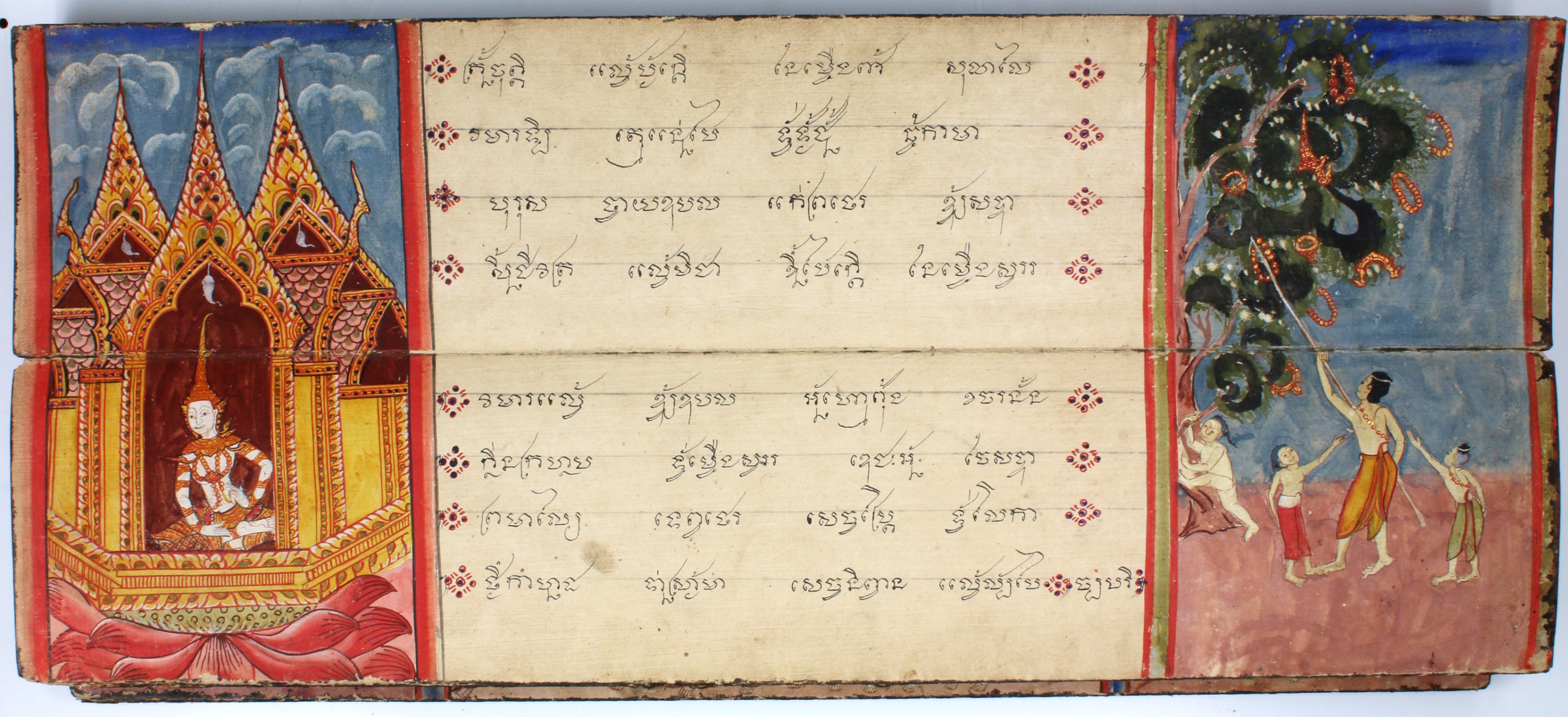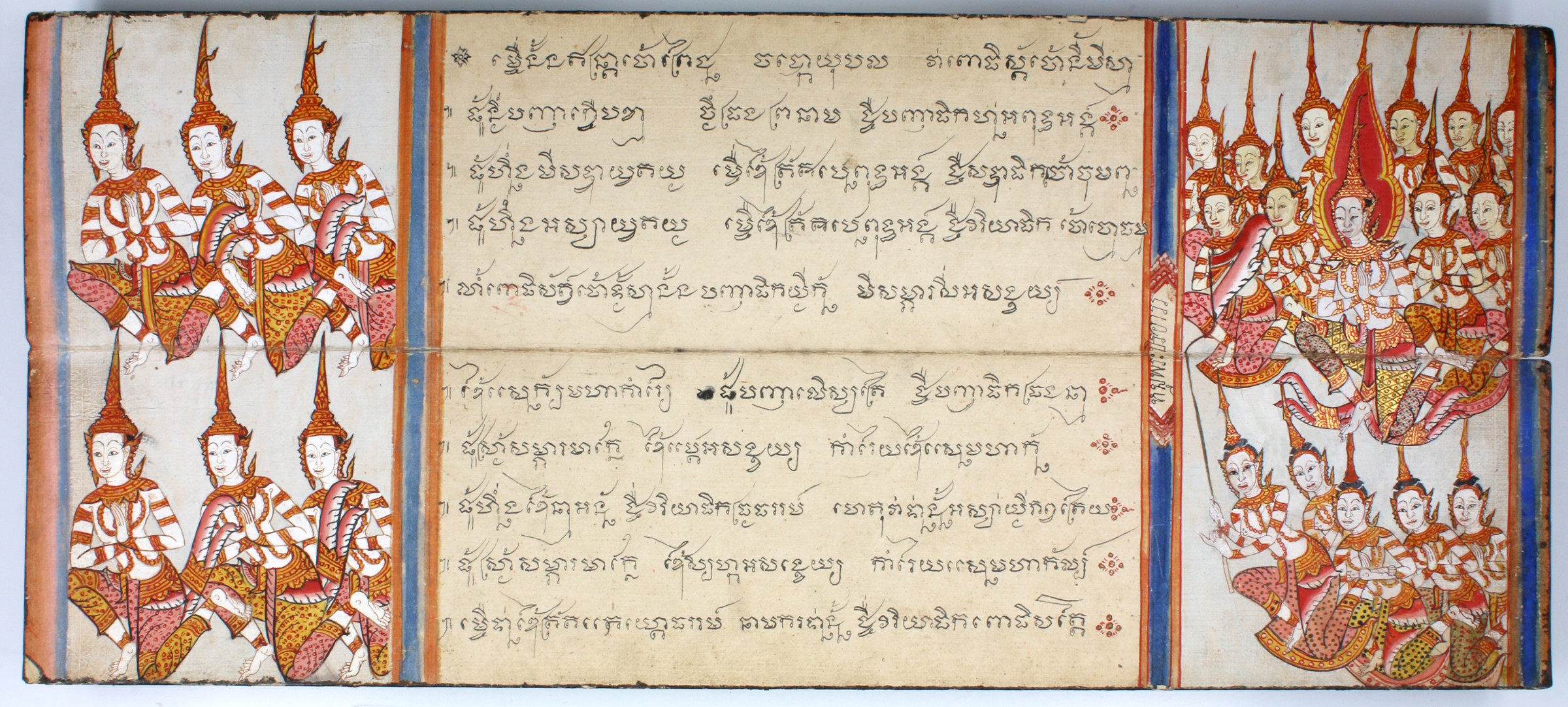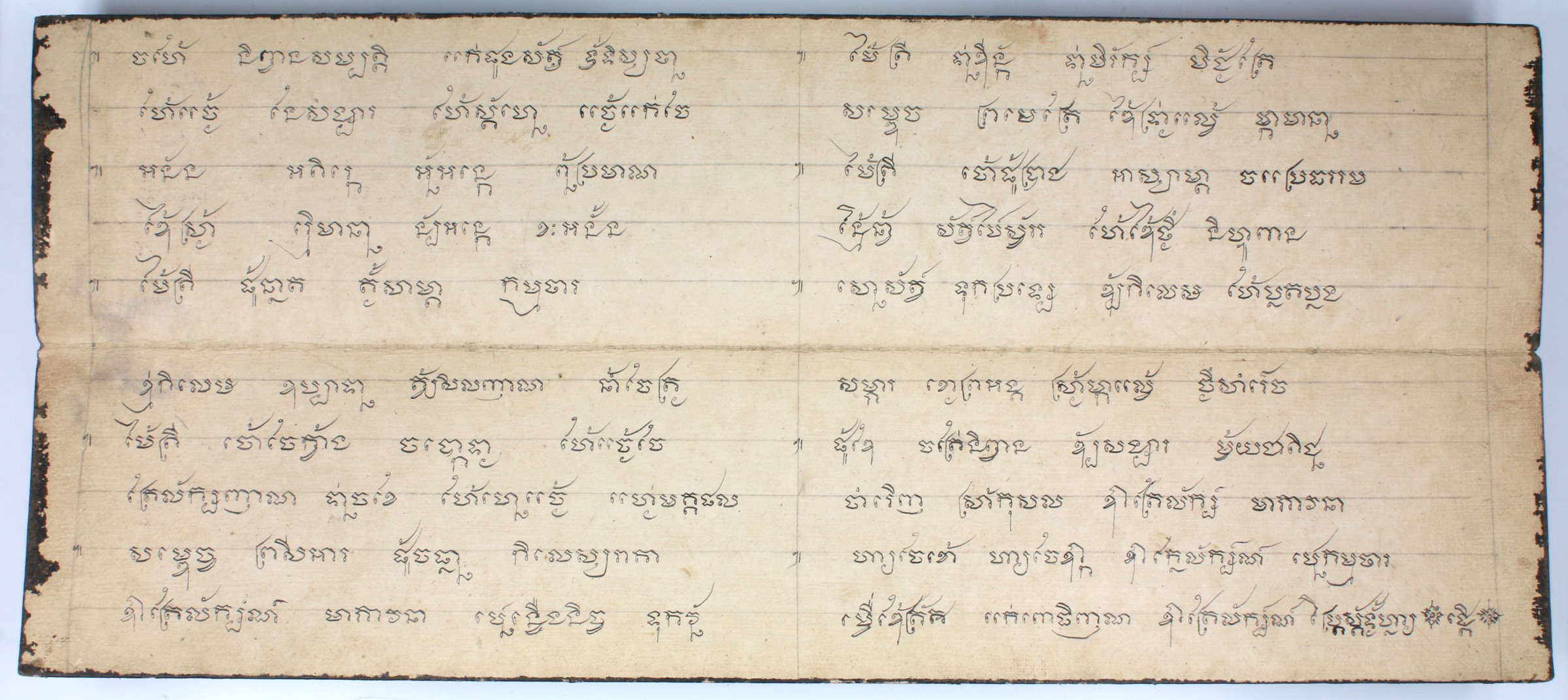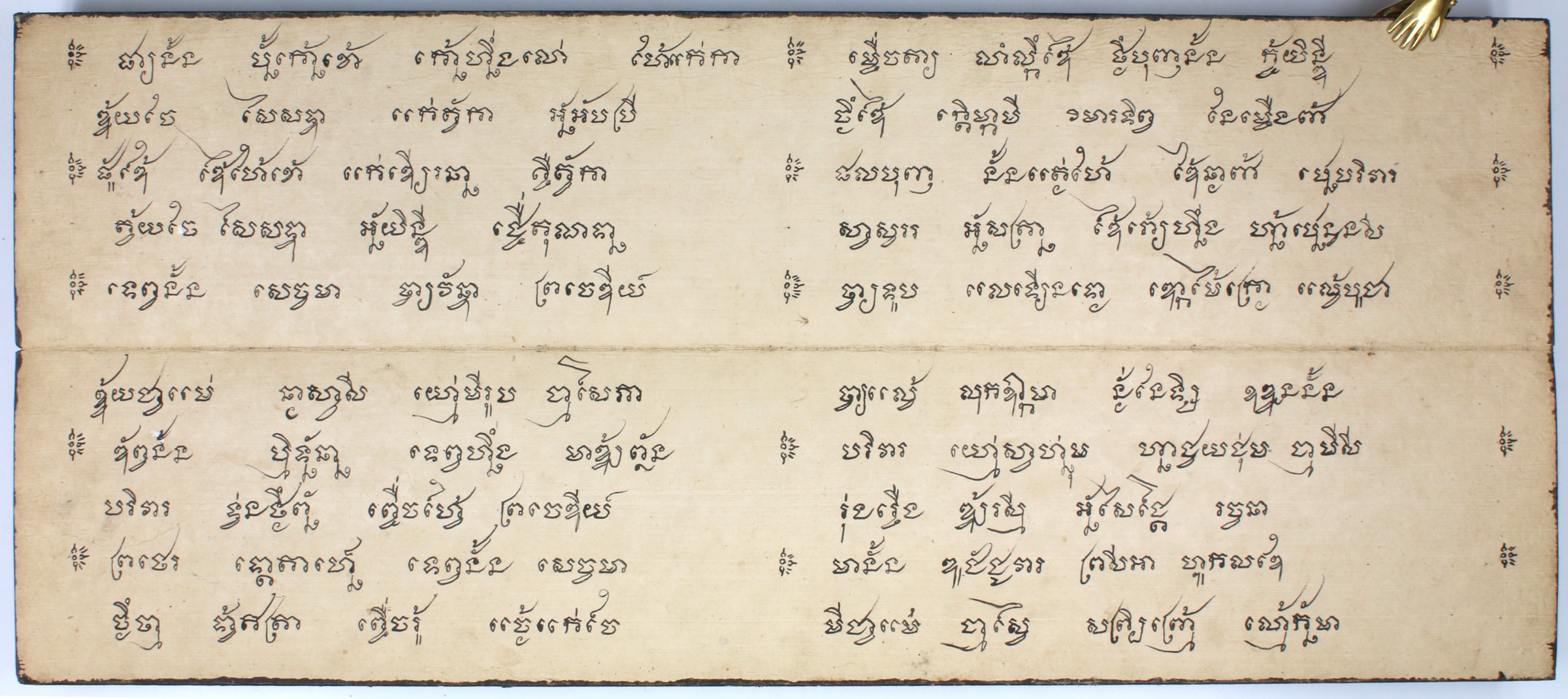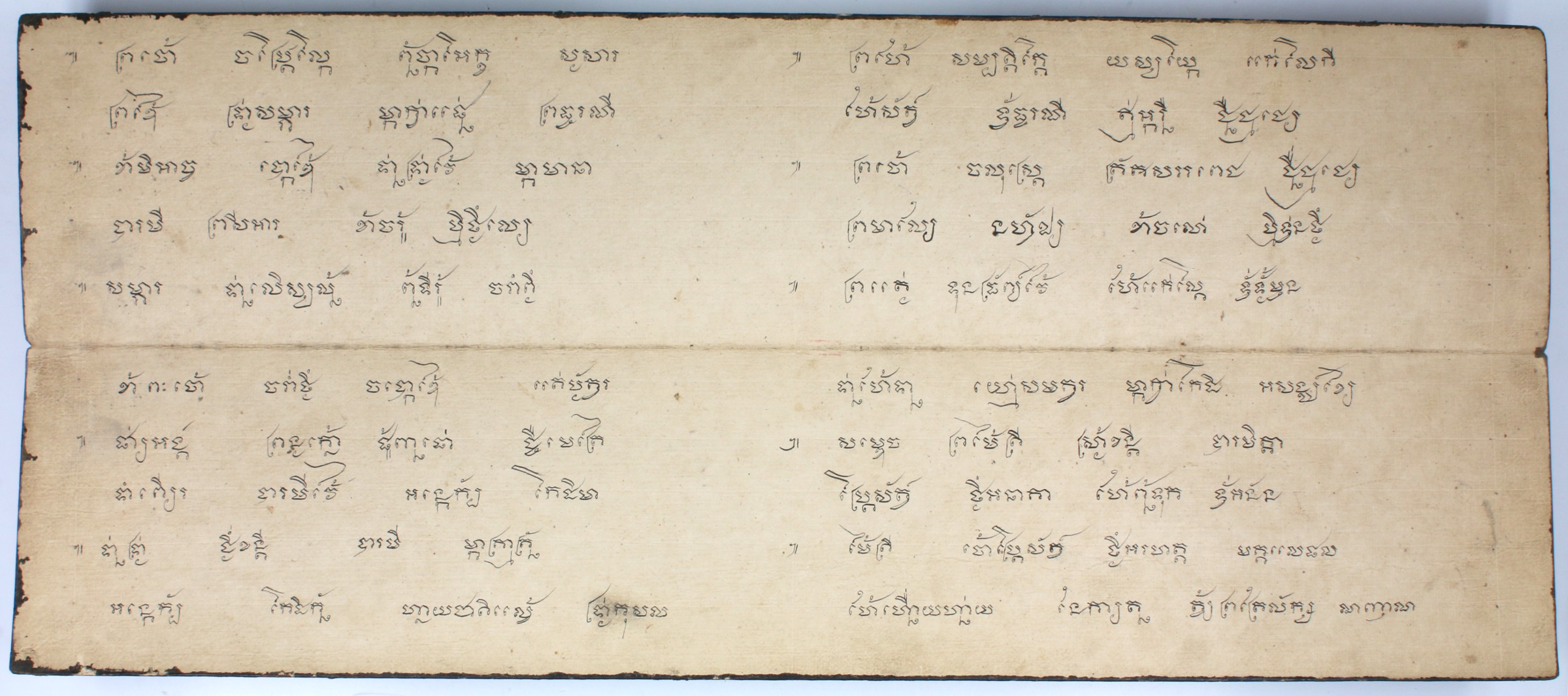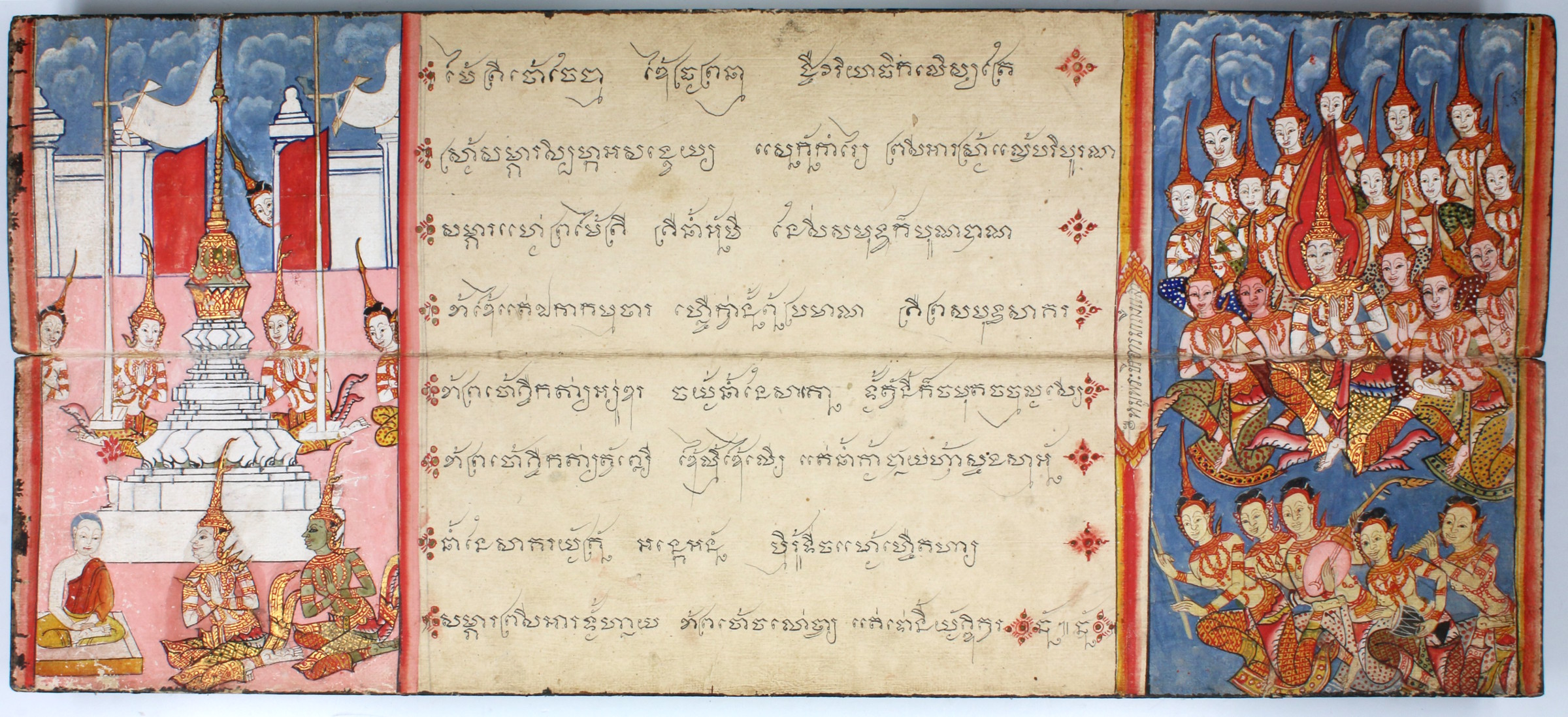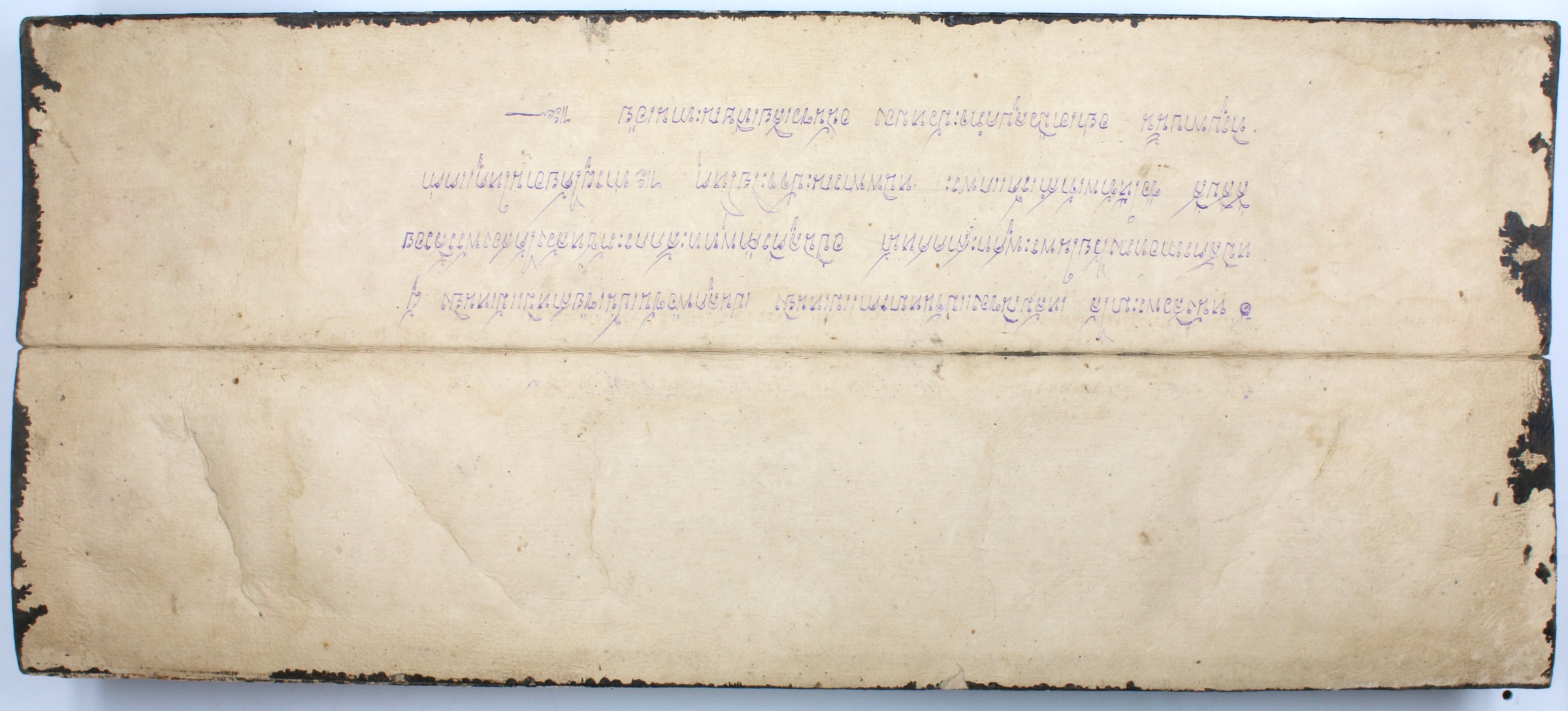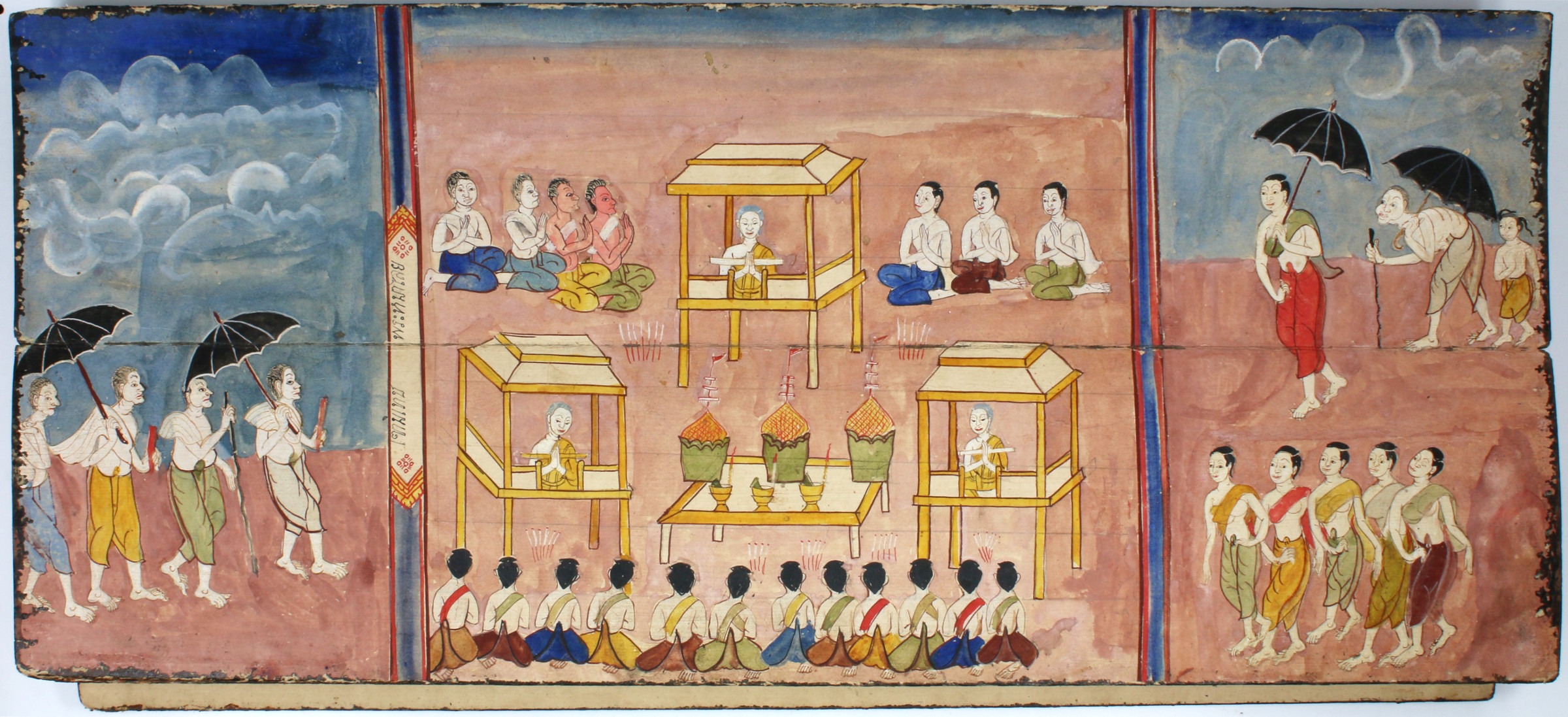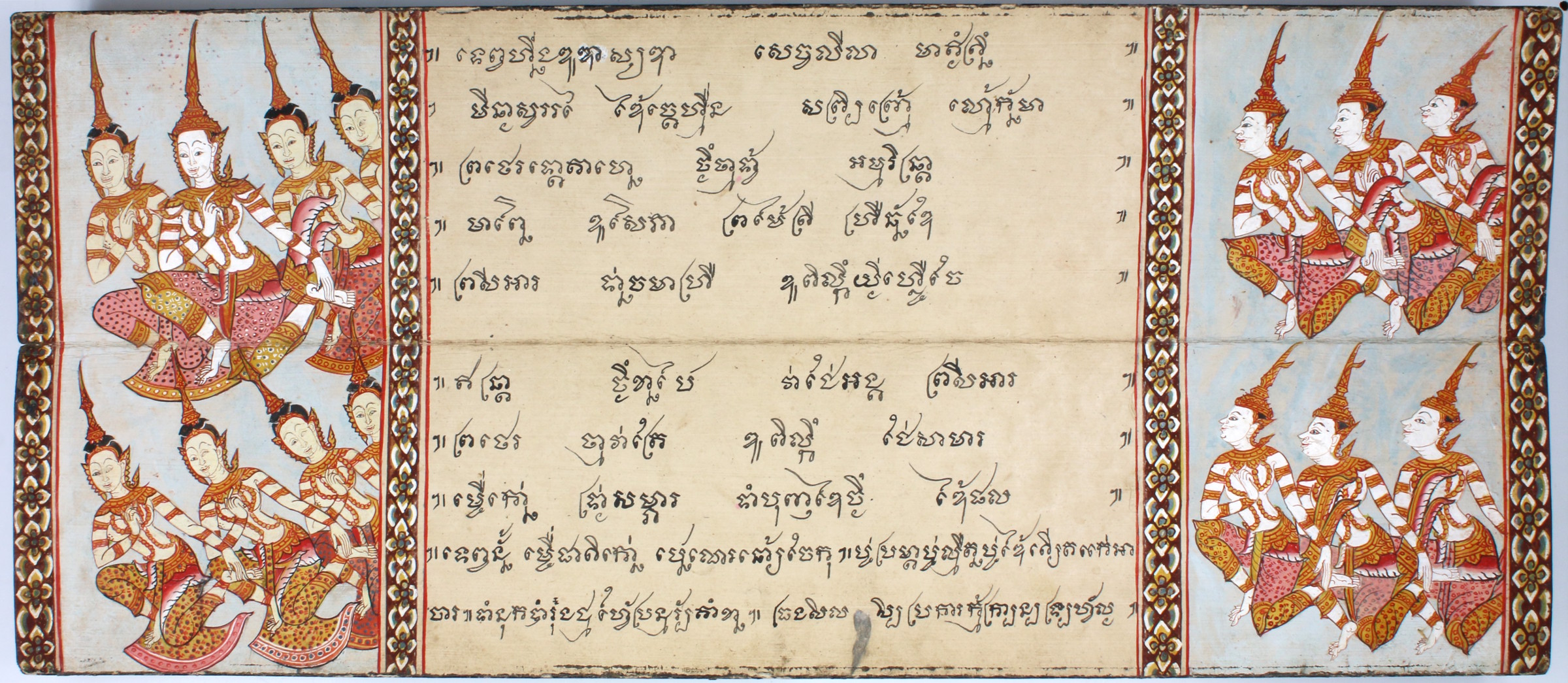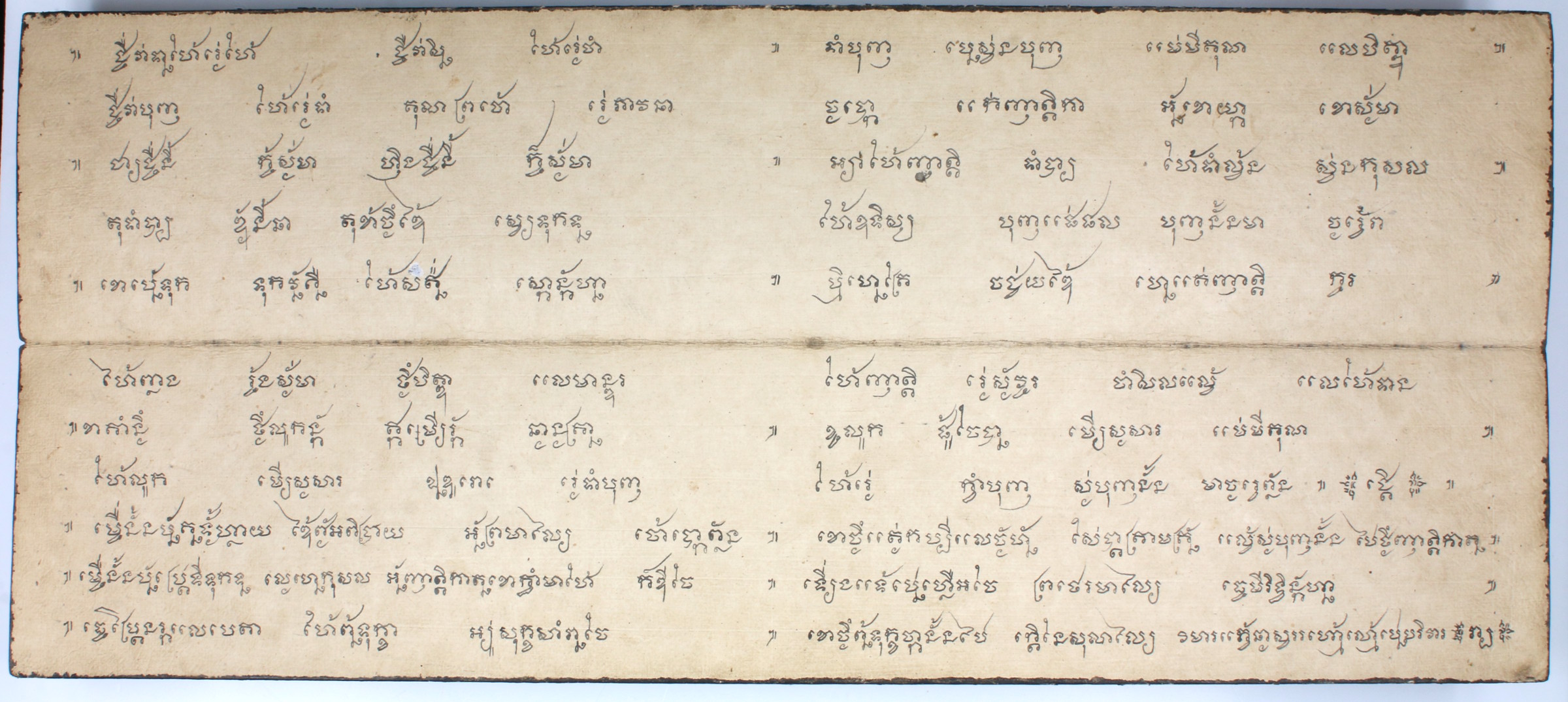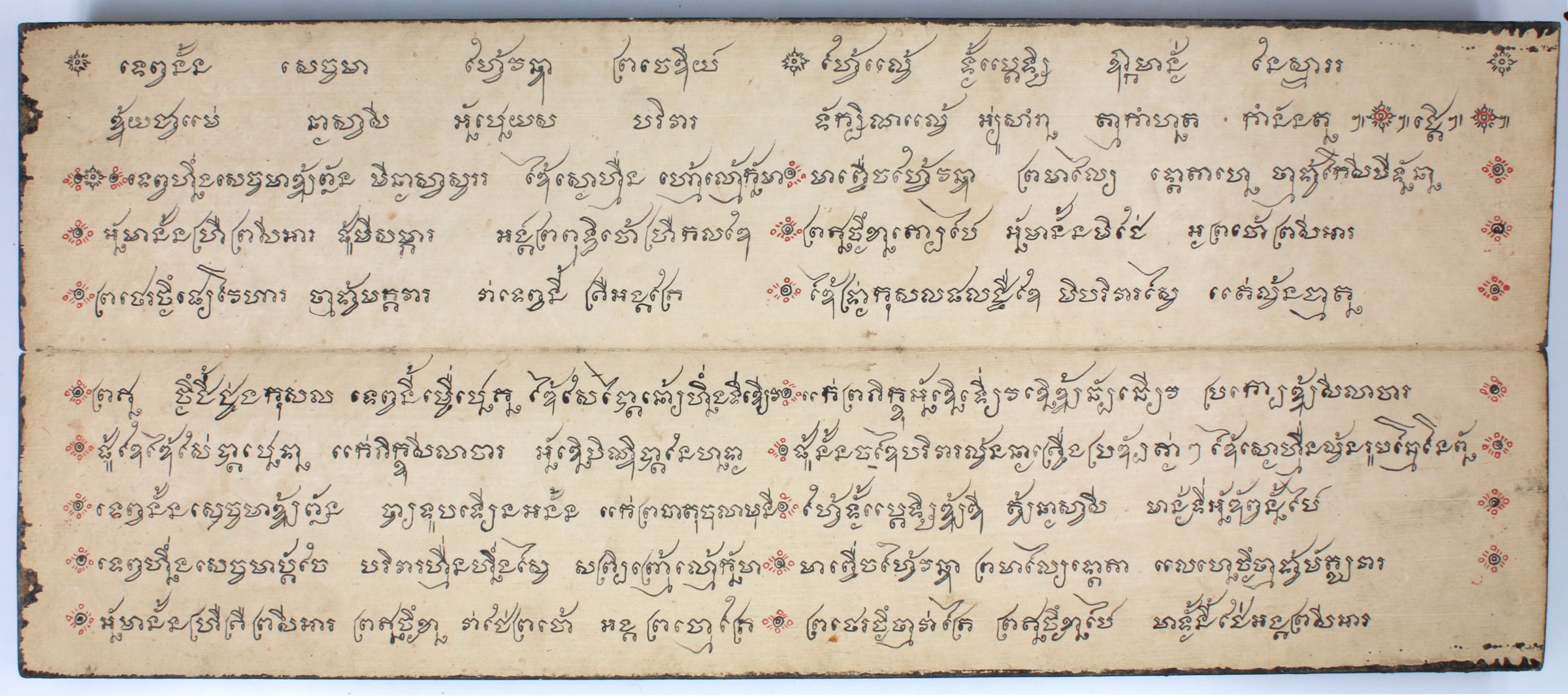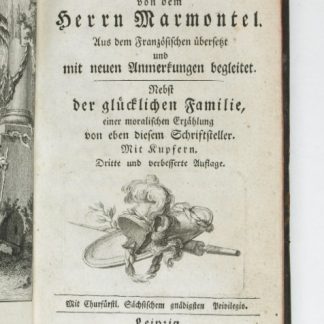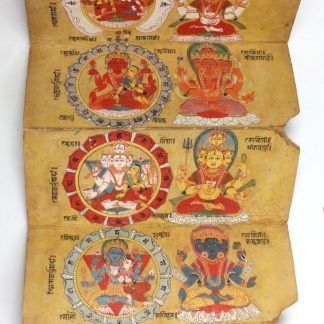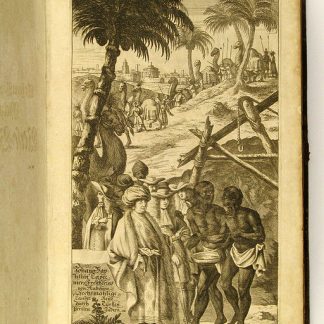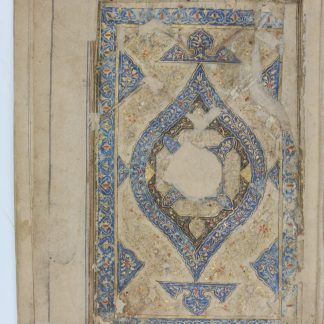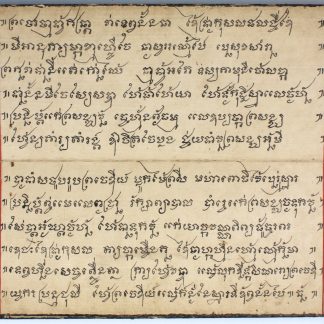A South Asian funerary manuscript
[The Fable of Phra Malai].
Oblong folding-book manuscript (samut khoi, khoi book), 670 x 145 mm. Thai manuscript on khoi paper in black Khom Thai script. 49 ff. Concertina-folded and written on both recto and verso. With 22 illuminations appearing in pairs on the left and right borders of the manuscript, and one full-page illumination. Contemporary black and gilt floral boards.
€ 9.500,00
This sumptuously illustrated folding book (samut khoi) tells the legend of the Buddhist monk Phra Malai, a famous fable of the Theravada Buddhist tradition. Phra Malai accumulates so much merit through good deeds and meditation that he acquires supernatural powers and travels across the mortal world, into hell, and to the heavenly realm. This story is of particular importance in Thai Buddhism, and a fine folding book like this one would likely be commissioned for a funeral celebration, where monks would give a theatric reading of the story.
Folding books such as these are an integral part of the manuscript traditions of Buddhists in Thailand, Cambodia, Laos, Burma, and Sri Lanka, likely originating in the latter, and are often called 'khoi books' after the bark paper from which they are made (another common term used in English is parabike, from Cambodian). Khoi books come in two types, white-paper and black-paper, with white-paper khoi books such as this one particularly noted for their intricate and colourful illustrations.
This particular manuscript boasts 23 hand-painted illustrations showing scenes from Phra Malai's legend. They include the monk's journey to the Buddhist hell (bodies are boiled in a cauldron), the gift of eight lotus flowers from a poor woodcutter, and a glimpse of the Chulamani Chedi, the heavenly stupa. The legend itself is based on an earlier Pali story, but in the Thai manuscript tradition, Phra Malai appears in the vernacular, written in Thai and usually in the Thom Kai script, a variant of Khmer script, but which includes Thai tone markers. The story itself is one of the most popular subjects of 19th century Thai manuscripts, and is commonly combined with other Buddhist stories and illustrations. This one was probably one of many commissioned by the family of a deceased loved one, as a traditional offering to gather merit for a soul navigating hell and reincarnation.
Light exterior wear and rubbing; a few corrections made to the text using ink and white paint.

